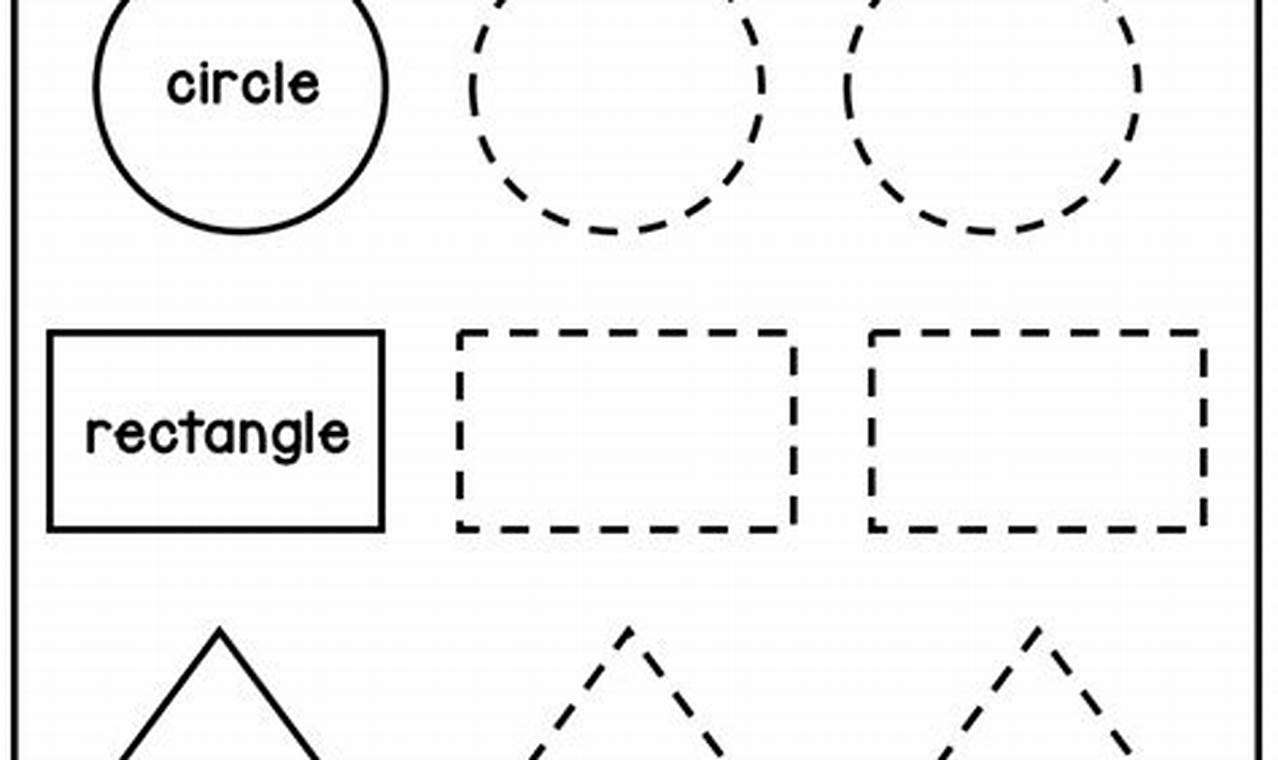Introducing young children to geometric shapes is a fundamental step in their early education. Recognizing and drawing shapes lays the groundwork for future math skills and spatial reasoning. The “geometric shape tracing worksheets for pre-k” are designed to make this learning process both fun and effective, providing a hands-on way for children to become familiar with essential shapes.
The primary benefit of using geometric shape tracing worksheets is the development of fine motor skills. Tracing the lines to form each shape helps children refine their hand-eye coordination and pencil control. These skills are essential for handwriting readiness and overall dexterity. Furthermore, the act of tracing reinforces shape recognition, enabling children to identify geometric figures in their everyday environment.
These worksheets typically feature a variety of common geometric shapes, including circles, squares, triangles, rectangles, and ovals. Each shape is presented with a dotted outline, allowing children to trace along the lines to complete the figure. Often, the worksheets include multiple instances of each shape, providing ample opportunity for practice. Some variations might also incorporate playful illustrations or simple instructions to further engage young learners. The use of bold, clear lines ensures the shapes are easy to follow, even for children who are just beginning to develop their fine motor skills.
To use the “geometric shape tracing worksheets for pre-k” effectively, start by providing a comfortable and supportive learning environment. Ensure the child has a clear workspace and a good grip pencil or crayon. Begin by introducing one shape at a time, encouraging the child to say the name of the shape as they trace it. If the child struggles, gently guide their hand along the lines. Break the task into small, manageable parts to prevent frustration. Offer positive reinforcement and praise for their efforts to build confidence and motivation.
To supplement the learning provided by these worksheets, consider incorporating shape-related activities into daily routines. Point out shapes found in the home or outside, such as a round plate or a square window. Engage in shape-sorting activities using toys or household objects. For further practice, explore additional tracing worksheets on Kidtraces.com, which offer a wide range of exercises designed to enhance pre-writing skills and shape recognition. Books and educational apps focused on shapes can also be valuable resources.
In conclusion, “geometric shape tracing worksheets for pre-k” provide a valuable tool for introducing young children to the world of shapes while developing essential fine motor skills. The combination of shape recognition and tracing practice prepares children for future math and literacy endeavors. Download the worksheets and explore the other educational resources available on Kidtraces.com to support continuous learning and skill development in a fun and engaging way.
